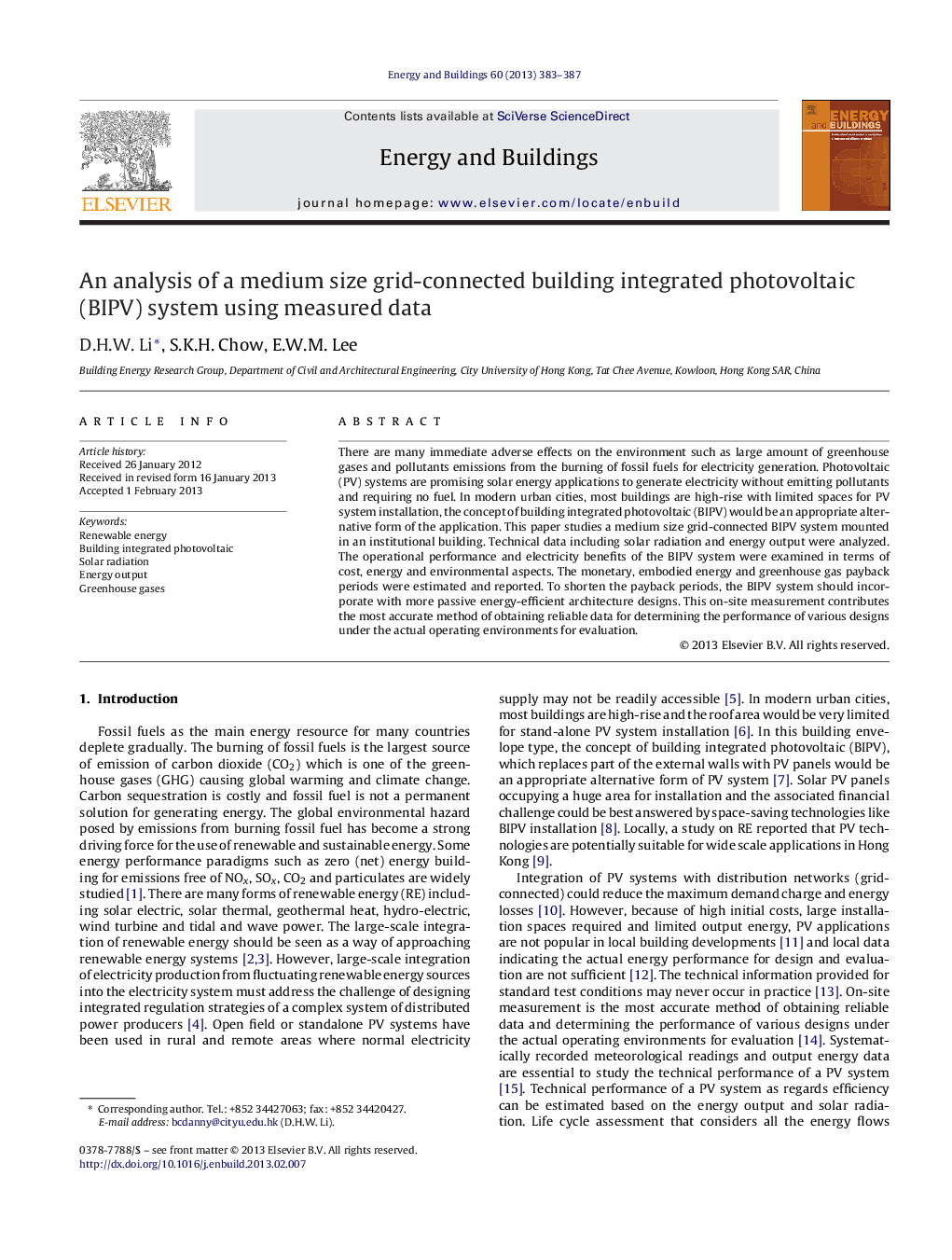| Article ID | Journal | Published Year | Pages | File Type |
|---|---|---|---|---|
| 263366 | Energy and Buildings | 2013 | 5 Pages |
There are many immediate adverse effects on the environment such as large amount of greenhouse gases and pollutants emissions from the burning of fossil fuels for electricity generation. Photovoltaic (PV) systems are promising solar energy applications to generate electricity without emitting pollutants and requiring no fuel. In modern urban cities, most buildings are high-rise with limited spaces for PV system installation, the concept of building integrated photovoltaic (BIPV) would be an appropriate alternative form of the application. This paper studies a medium size grid-connected BIPV system mounted in an institutional building. Technical data including solar radiation and energy output were analyzed. The operational performance and electricity benefits of the BIPV system were examined in terms of cost, energy and environmental aspects. The monetary, embodied energy and greenhouse gas payback periods were estimated and reported. To shorten the payback periods, the BIPV system should incorporate with more passive energy-efficient architecture designs. This on-site measurement contributes the most accurate method of obtaining reliable data for determining the performance of various designs under the actual operating environments for evaluation.
► A grid-connected building integrated photovoltaic (BIPV) system was studied. ► The recorded energy output ranged from 10 to 360 kWh with a mean value of 116.3 kWh. ► The monthly average daily efficiency was computed varying from 10.6% to 12.8%. ► The monetary payback was calculated to be between 53.2 and 57.7 years. ► The energy and GHG payback periods were 9.3 and 5.5 years, respectively.
